Oil on canvas, 100 x 0.65 cm.
Beautiful original frame in gilded stuccoed wood in the Louis fishnets and ribboned bangle.
-------------------
Presumably due to the brush of one of his close friends or fervent followers, our canvas shows with the same decorative style and this, in reduced dimensions, one of the large pictorial compositions (3.05 m x 1.08 m) signed by one of the most prolific, exuberant and singularly poetic painters of the French school of painting of the end of the 19th and beginning of the 20th century: Albert Maignan (1845-1908).
In progress in January 1902*, the original canvas was officially presented in the spring on the walls of Room IV of the Paris Salon of the Society of French Artists under number 1100 at the same time as a "Study" (n °1101) feminine "of identical construction", "breathing the indecisive charm of adolescence". Titled "Seduction", the painted work was accompanied in the Explanatory Booklet of the Salon by its source of inspiration taken from the biblical text of Genesis: "The Serpent said to the Woman: you will be like Gods" (Genesis 3: 1-6 ). Reproduced in the Illustrated Catalog of the Salon (Dumas, F dir., p.197), the painting was acquired the same year by the State and attributed to the Tessé Museum (Inv: LM. 10. 643) located in Le Mans (Sarthe). ), city dear to A.Maignan. In conjunction with this ample composition "adorned with all the riches of this artist's palette" (Catalogue of the Musée du Mans, 1932, n° 190 and 192 p.39), this museum institution then presented it under the title of Temptation a Sketch (canvas, 0.80x 0.34 cm), bequeathed in 1917 by Mr. Théodore David. The Amiens museum holds a smaller format preparatory study of this Seduction, also called The Temptation of Eve.
Canvas, which was to arouse divergent comments during its presentation at the Salon. As Henri Chantavoine rightly remarked in an essay devoted to Albert Maignan, this painter whose "joyful and amused verve delighted in everything, practiced everything" "disconcerted the public a little(..); he disconcerted, frightened certain critics (..) on the other hand it pleased true art lovers by discovering itself to them under a new aspect and giving them a new pleasure" (Gazette des Beaux-Arts, July 1909, p.42)
In the presence of our canvas which respects scenographic virtuosity, formal inventiveness not devoid of a fantastic dimension, the quivering or dazzling magic of colors - caressing the flesh, fertilizing with heavenly blooms, brightening "the wonderfully insolent tail" of the anthropomorphic Serpent - specific to the inventive and poetic decorative composition designed by Albert Maignan, we will cite some appreciations captured in the artistic press of the time:
-"M.Maignan-Séduction. It is the Serpent of Genesis, coiled around a tree, like the Sin of Adam, by Michelangelo, and which holds friendly words for Eve, standing and naked .In the foreground, a fireworks display of flowers and, in the last, almost metallic foliage. Eve's pose has movement, and, in the purity of the lines, this figure retains a grace of abandon" (Marcel Fouquier).
- M. Maignan's Tempted Eve displays her fair complexions in a paradoxical Eden, where the productions of all the elements fraternize" (Henry Marcel)
-The Seduction, by M. Maignan, where a simply delicious Eve listens, blushing, to the insidious words of a monster who is perhaps not included in Linnaeus' classifications, but nonetheless constitutes one way of escaping from banality" (L'Eclair, Salons de 1902, p.5).
From our point of view, the fine remarks made by the salon maker Furetières on The Seduction of Albert Maignan further reveal the nature of this "painter coupled with a poet, both curiously original, undulating and diverse" and, in fact, sheds light on the dreamlike, if not innovative aspect of this composition:
"Mr. Maignan (..). He is above all a decorator of great skill. He plays with color; he has fun with all the whims of a brilliant imagination. His Serpent which seduces Eve is quite fantastic First of all, it is extremely long; the scales are incredibly rich. Besides, this Snake there must be more real than this puny reptile that we are usually shown and which always leaves a doubt about the role he could have played and which was so fatal to us! M.Maignan did not hesitate. His Serpent has a human head, eyes like those of Don Juan; he speaks to Eve, in the ear, and what he says seems to smile on him. Embroideries, fairy tales, legends, whatever he wants as long as the decorator's brush can have fun and entertain our eyes. This last goal is achieved" (Le Soleil , May 3, 1902).
It will be noted that in this canvas, which revisits a traditional biblical subject in an enchanting mode, the painter's predilection for dynamic and harmonious compositions with an allegorical scope ((Les Voix du Toscin, 1882-1888; La Muse Verte, La Fortune passe, 1895), his penchant for floral poetics associated with the female figure (Le Printemps de la vie, 1883; decoration of the Parisian mansion of financier Homberg, 1892 as his attraction for the marvelous. (The appearance of Mathilda, 1881; The Donkey Skin Ring, 1886; The Birth of the Pearl, 1890; The Metamorphoses of Ovid, suite of tapestry cartoons for the Grand Gallery of the Senate in Paris, 1895-1908)
Recently a book - Foucart, Bruno, Alamany, Véronique et al., Albert Maignan. Painter and decorator of Paris fin de siècle, Paris: Ed. Norma, 2016 - was dedicated to this "elusive" artist, oscillating between a fashionable naturalism at the end of the 19th century and an elegiac painting with symbolist accents" well represented in museum institutions (Paris, Musée d'Orsay, Petit Palais; Amiens, Le Mans, Lille, etc.) and high places in Paris (Opéra Comique, Gare de Lyon, Chapel of Notre-Dame-de-Consolation, etc.) or provincial (Chamber of Commerce of Saint-Etienne)
* "In his workshop on rue La Bruyère, Mr. Albert Maignan, with his palette resting on his left arm, is standing on a high ladder in front of a vast, dazzling and luminous canvas, which throws flakes of light into the gray January day (...) On the high canvas, a great terrible dragon, which winds in the light through strange flowers (..), Le Figaro, January 10, 1902, p.1
----------------------------
French school of painting from the beginning of the 20th century.
On the reverse of the Frame: Label affixed: "Glasses, Frames, gilding. V.DECOUX, Gilder framer of Maison Querville, 11 bis, rue des Minimes, Le Mans"
Dimensions: canvas: 100x 65 cm; -With frame: 124 x0.87 cm.
Canvas restored according to the rules of the art. Original frame (Note, on this one there are small gaps in one of the spandrels)



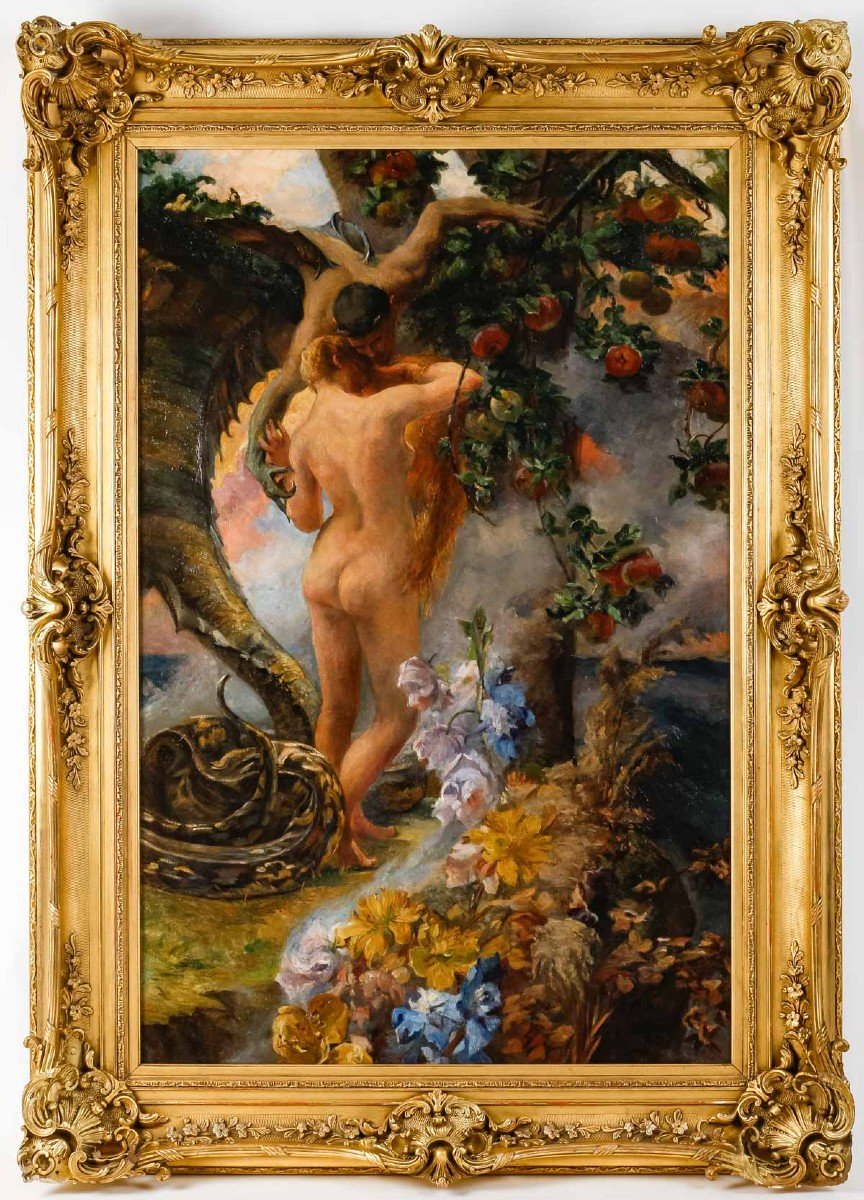
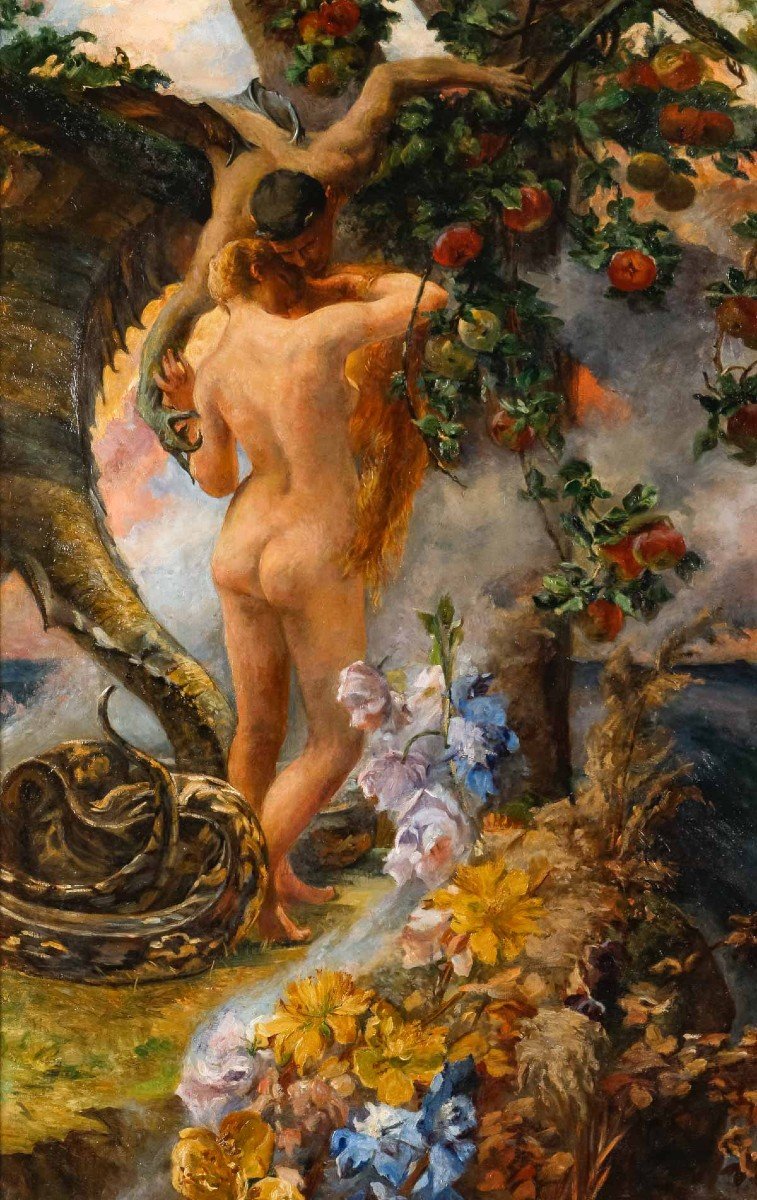
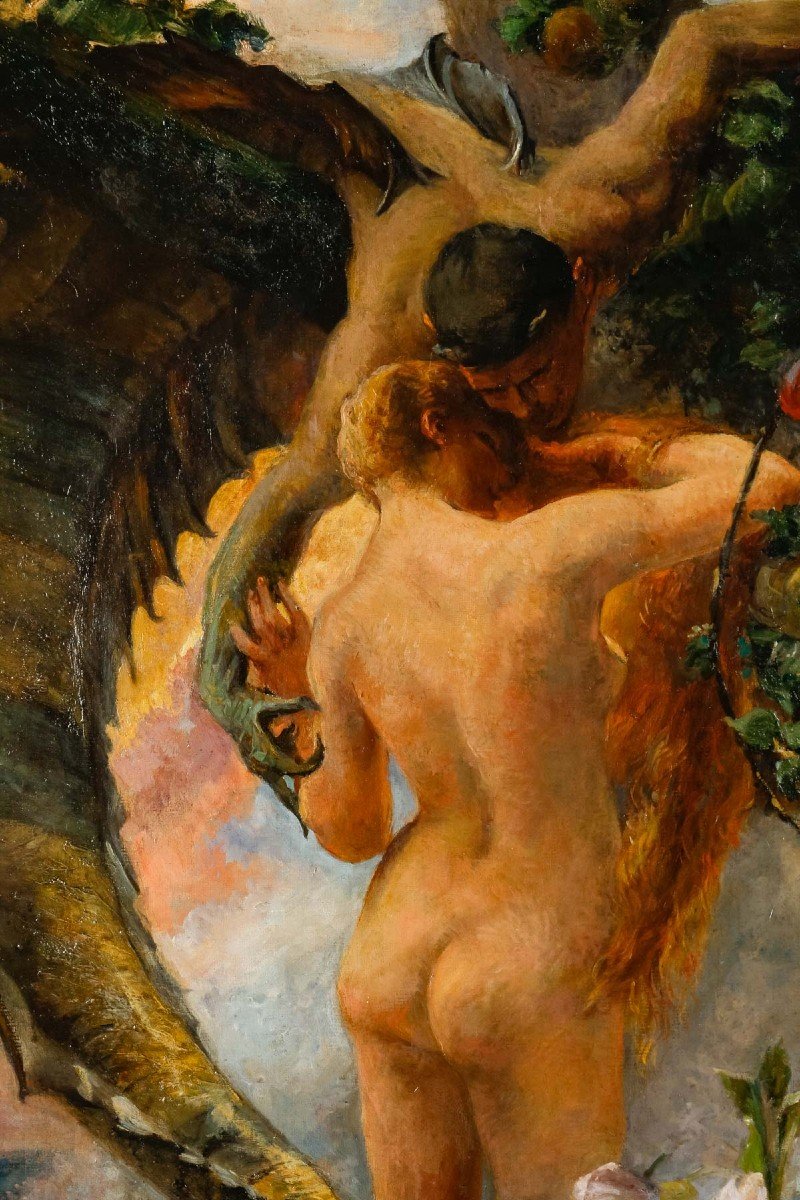
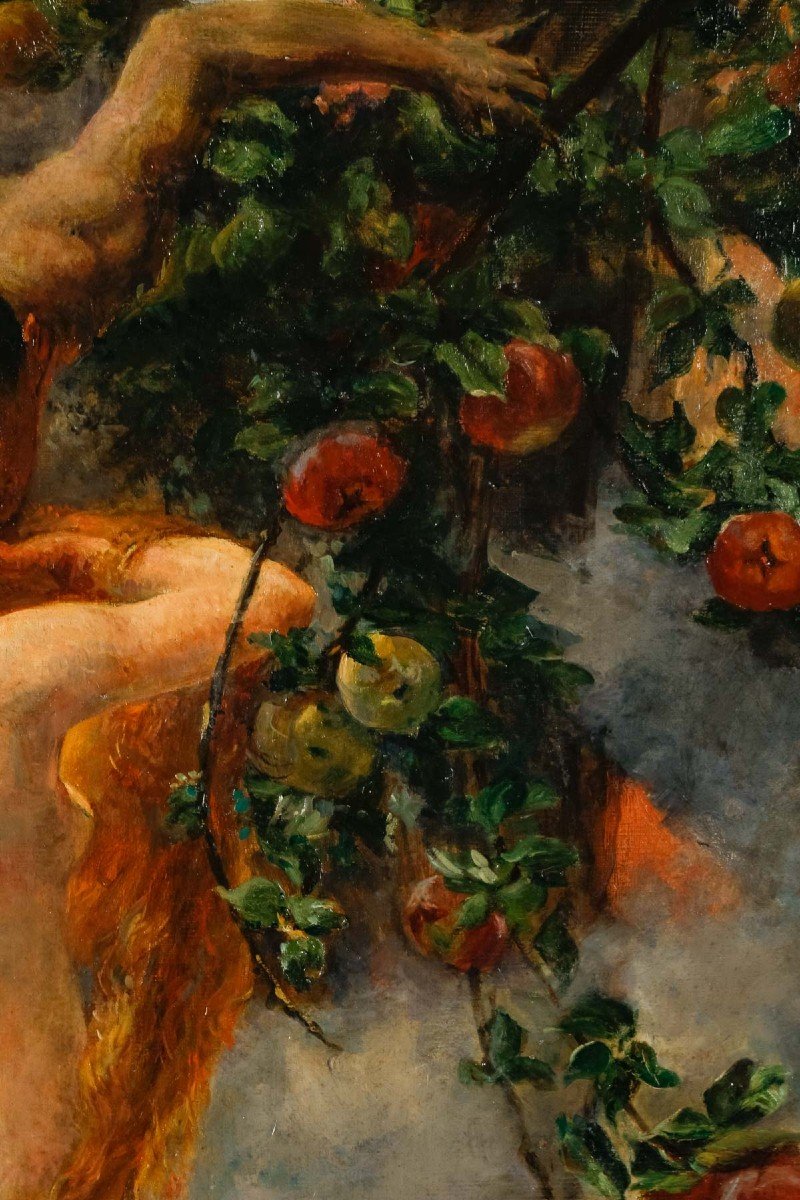
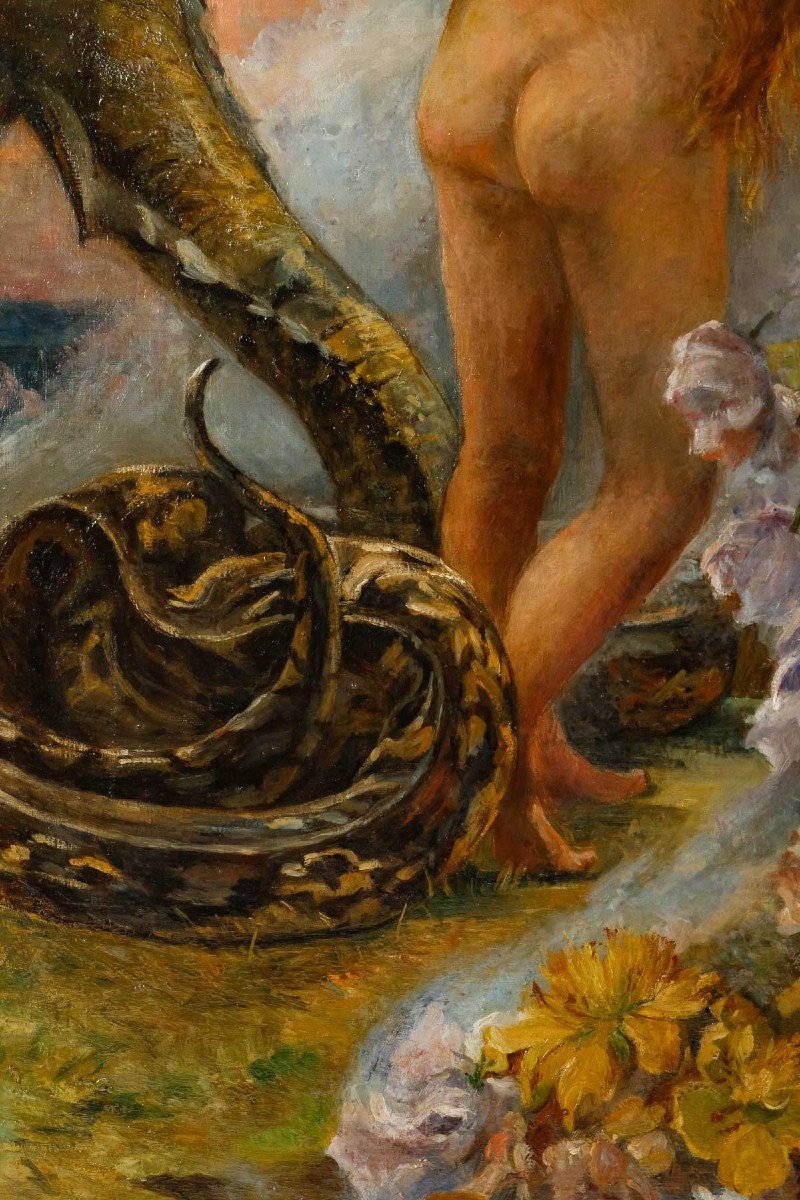
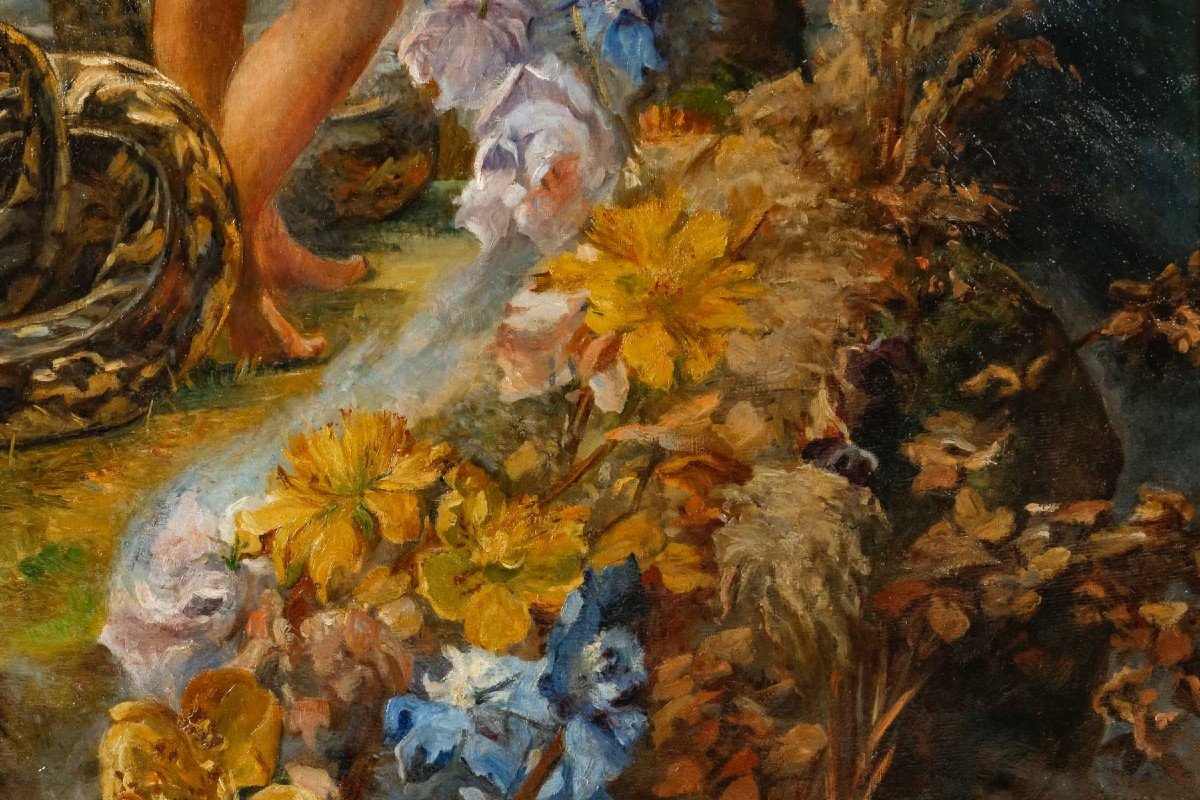
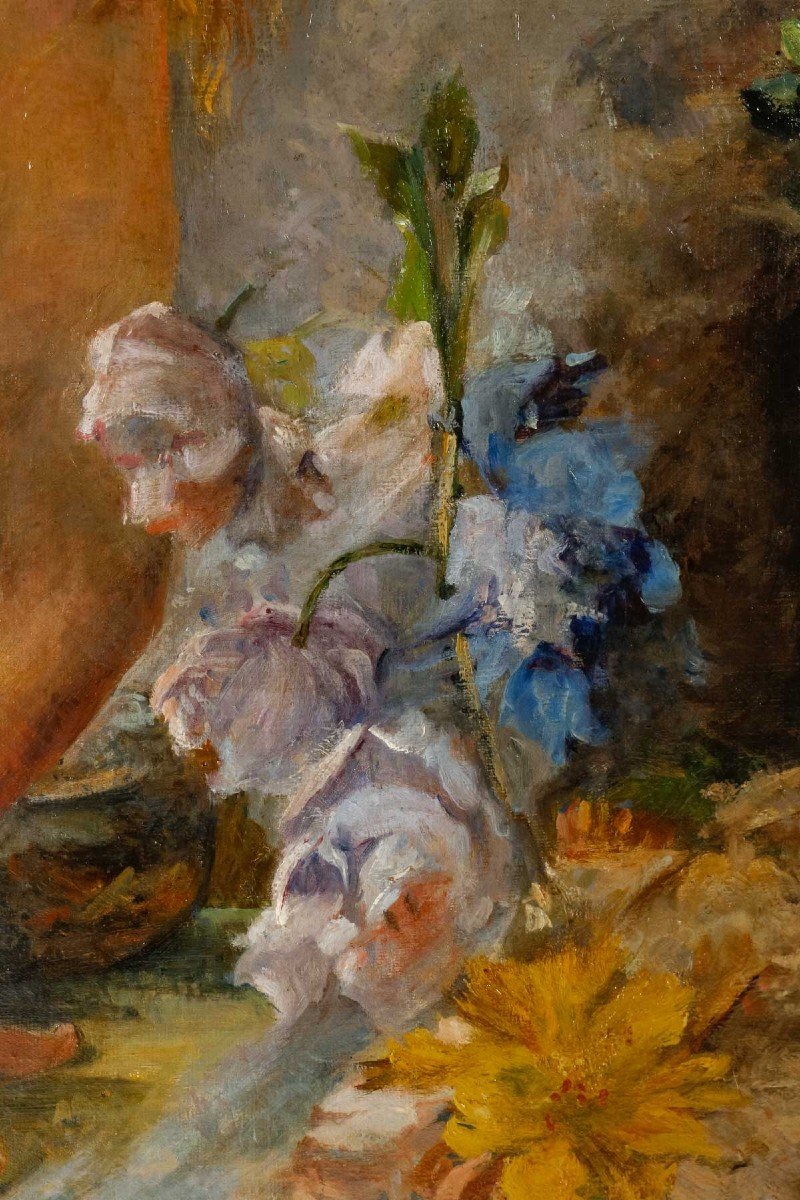
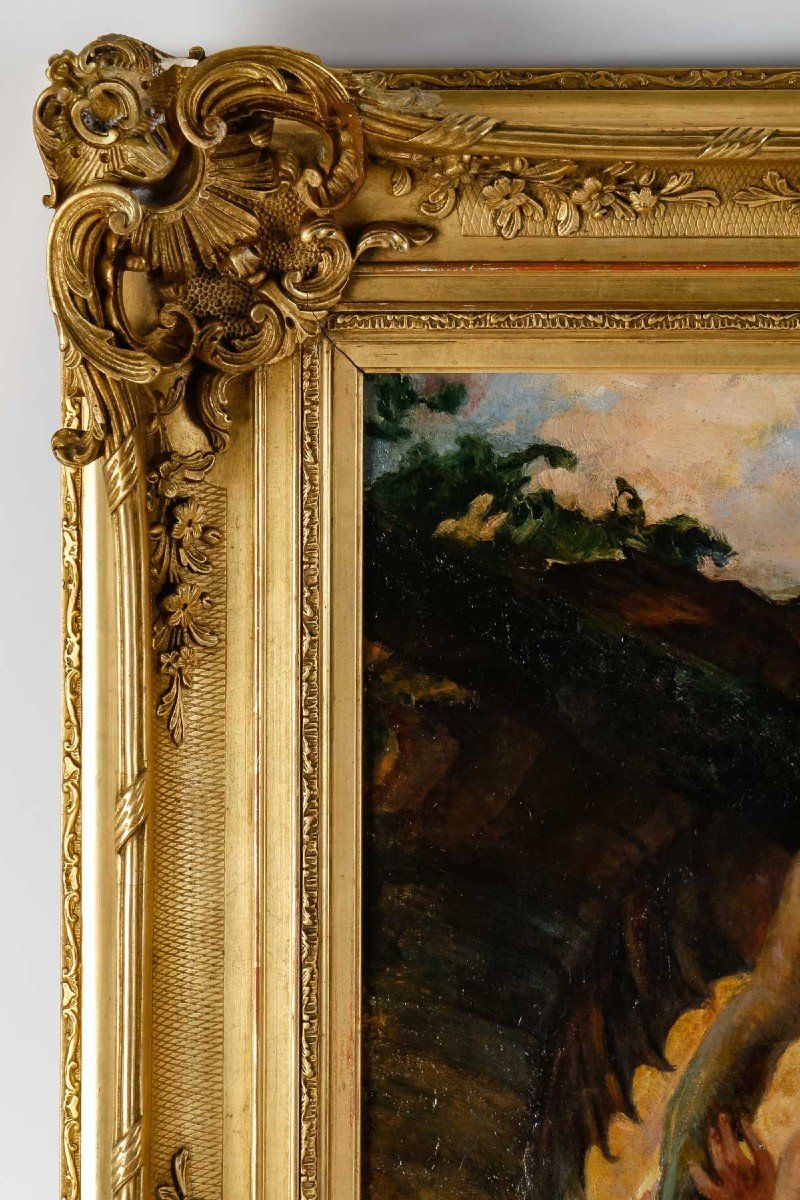
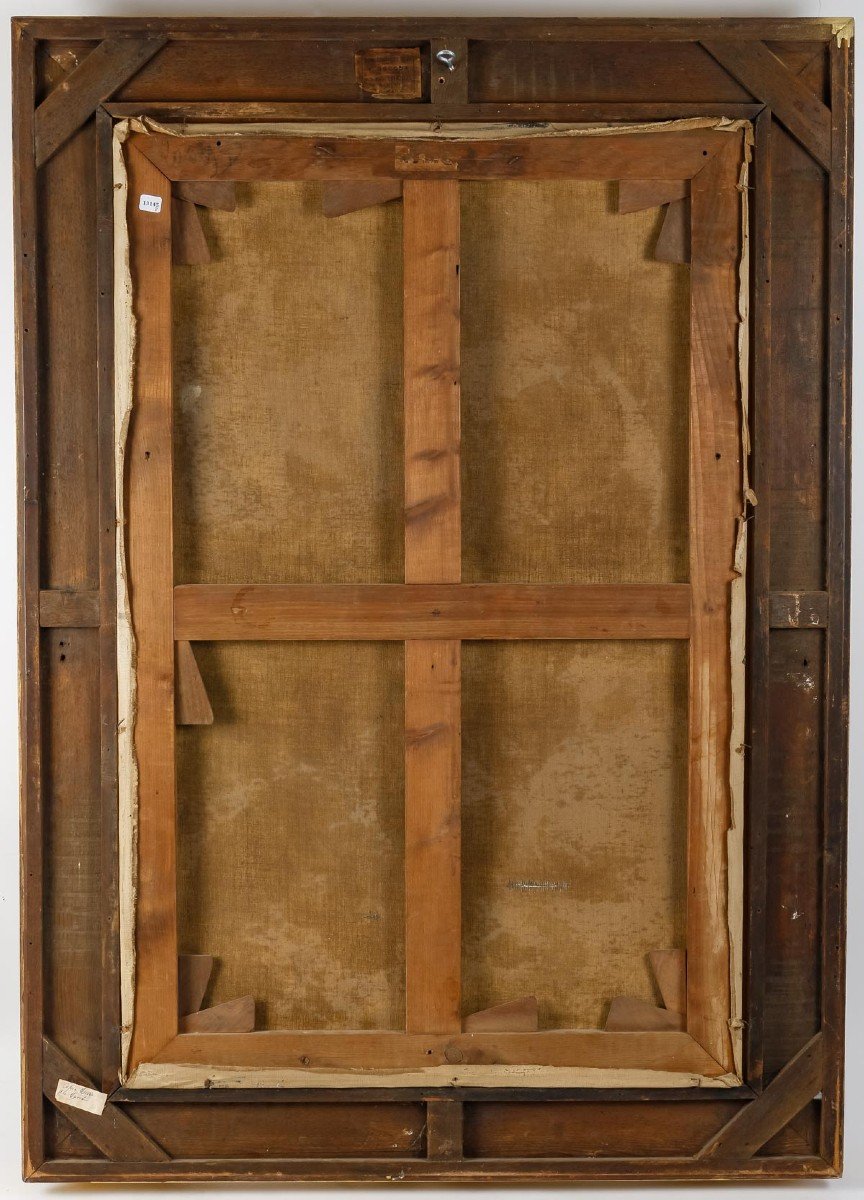

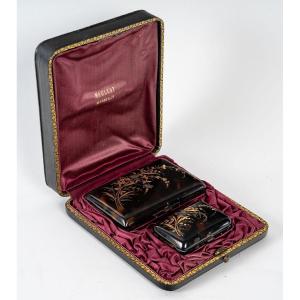













 Le Magazine de PROANTIC
Le Magazine de PROANTIC TRÉSORS Magazine
TRÉSORS Magazine Rivista Artiquariato
Rivista Artiquariato
